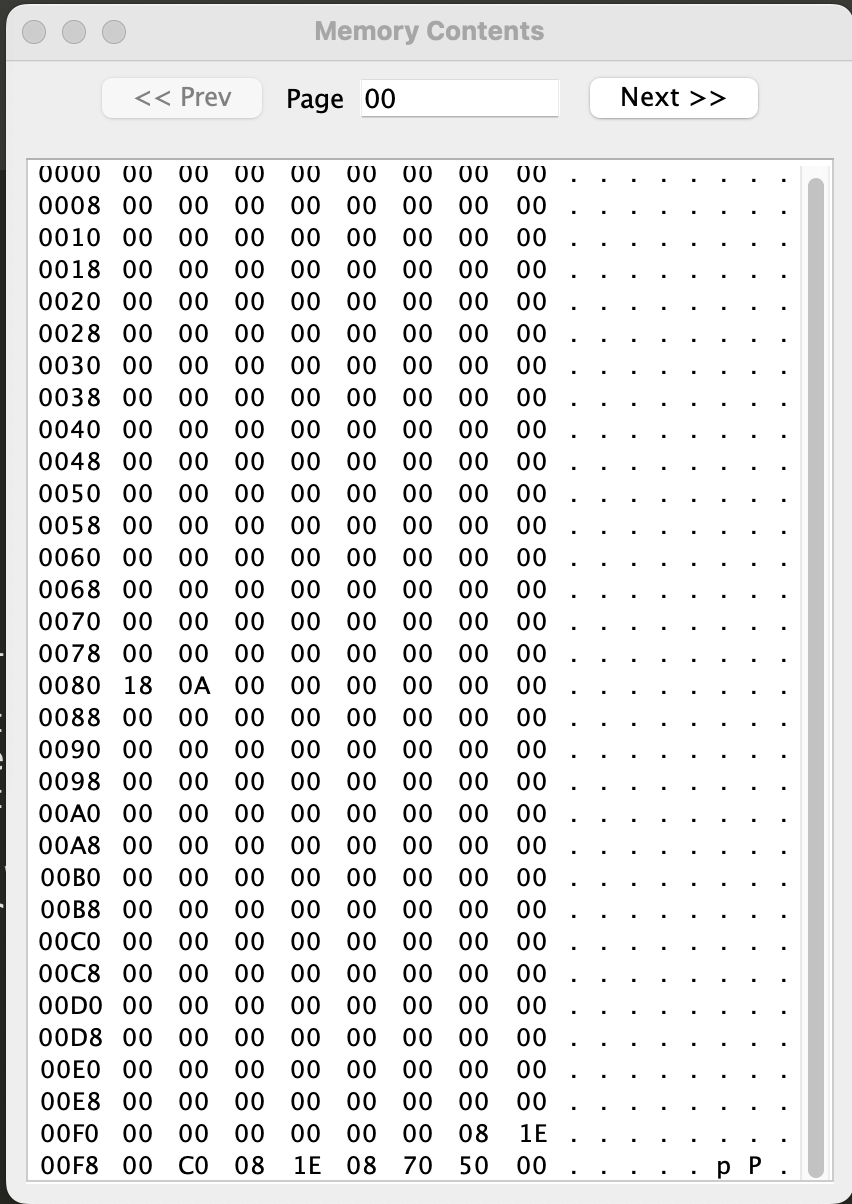6502 FORTH, Part 5: Multiplication for Peasants
Published:
It’s been a while since I worked on this project, and I wanted to ease back into it by implementing something auxilliary to get me back into the flow of writing assembly. It turns out the 6502 only has instructions for addition and subtraction, meaning that if you want any higher level arithmetic operations (multiplication, division), they need to be implemented manually. Furthermore, since we’re implementing a 16-bit system, we’ll have to make sure these operations work on 16-bit numbers. This post is going to cover multiplication–I’m still working out the best way to write a division algorithm.
What’s this about Peasants?
Paul Dourish has previously implemented 16-bit multiplication, but I wanted to challenge myself to come up with my own implementation. It turns out there are a lot of algorithms for multiplying two numbers together, but the one that stood out to me the most was a funky algorithm called Peasant Multiplication. I’m not really sure where the name came from, but it’s also referred to as ancient Egyptian multiplication.
The algorithm is pretty simple, and its operations translate very well to computers:
1. Write the multiplier and the multiplicand in two adjacent columns (left and right)
2. Write each successive row by doubling the previous left entry and halving the previous right entry
3. Cross out any rows with an even number on the left entry
4. Sum up the non-crossed out entries in the right column
It’s a little hard to explain without an example, so I’m going to walk through how we’d use this to carry out the operation 50 * 17.
First, we write out the two numbers in adjacent columns, then form the remaining rows by doubling/halving the previous entries:
50 17
25 34
12 68
6 136
3 272
1 544
We drop the remainder at each point, and stop once the left row is 1. After this, we eliminate the rows with even entries on the left.
25 34
3 272
1 544
Finally, we add up the remaining numbers on the right column: 34 + 272 + 544 = 850, which is the correct answer!
This is an especially nice algorithm for the 6502, since it uses only addition and multiplication/division by 2, which are readily implemented through addition (adc) and bitshifting operations. Written in pseudocode, the algorithm looks like this:
let m=multiplier, c=multiplicand
let result=0
while c > 0:
if m is even:
result += c
m = m*2
c = c/2
return result
Now it’s just a matter of implementing this in the 6502 in a way that’s compatible with my 16-bit stack structure.
Implementing the Algorithm
To quickly recap, the stack is located at the top of the zero page, growing downward and indexed by the x register. To be consistent with my other arithmetic operations, this implementation should remove the top two entries from the stack and push the result of them multiplied together. I’m going to write it in a few pieces, starting with the simplest part: initialization.
mult16:
; First add some space on the stack
dex
dex
; Initialize both entries to zero
stz stackbase+1,x
stz stackbase+2,x
; run the algorithm, this should store the result in the area we just allocated
jsr multiplier_algo
; store the result into where the stack will end up being
lda stackbase+1,x
sta stackbase+5,x
lda stackbase+2,x
sta stackbase+6,x
; shrink stack back down two positions
inx
inx
inx
inx
rtsThis part is pretty simple. As mentioned before, we’re going to pop the two top entries and push the end product. To accomplish this, we’ll first allocate space at the top of the stack, calculate the product of the two entries below it, copy the top entry two entries down, and then pop the top two entries. Right before the final pop, entries (1) and (3) are identical. Popping two values means that the top of the stack is now the product we wanted, and the other two values have been removed.
Now we can move onto the multiplier_algo section. There are three main pieces of this to implement:
- Add the multiplicand to our temporary value if the multiplier is odd
- Multiply and divide the multiplicand and multiplier, respectively
- Check if the multiplier is 1, and if so, return
Starting with the first part, the code looks pretty similar to when I implemented addition for the stack.
multiplier_algo:
lda #$01
bit stackbase+5,x ; test if c is odd
.(
beq skip ; skip to shift if even
clc ; else add
lda stackbase+3,x
adc stackbase+1,x
sta stackbase+1,x
lda stackbase+4,x
adc stackbase+2,x
sta stackbase+2,x
skip:
.)All we do here is a bit comparison test between 1 and the multiplier, and if it’s odd, we add the multiplicand to our temporary space.
Next comes the bitshifting, which taught me a little about the operations in the 6502. The opcodes for the 65c02 contain two types of shift: asl for Arithmetic Shift Left and rol for Rotate Left. For shifting right, we have rsl (Right Shift Logical) and ror. Looking at the opcode reference, the operations are defined as follows:
asl
C <- 7 6 5 4 3 2 1 0 <- 0
rol
C <- 7 6 5 4 3 2 1 0 <- C
rsl
0 -> 7 6 5 4 3 2 1 0 -> C
ror
C -> 7 6 5 4 3 2 1 0 -> C
C stands for the Carry bit, which is one of the internal flags of the 6502. asl and rsl both shift a 0 into the new space, and shift the outgoing bit into the carry register. ror and rol both first shift the carry bit into the new position, then shift the outgoing bit into the carry register. This means that, if we have a 16-bit number, we can do a complete right/left shift in three operations:
- Clear the carry bit
- Shift the upper byte right (for left shift, shift the lower byte left)
- Rotate the lower byte right (for left shift, rotate the upper byte left)
This guarantees that the right/leftmost bit is correctly shifted to the lower/upper byte (resp.). In code, this looks like the following:
;; Bitshift the values
clc
asl stackbase+3,x ; multiply m by two (note MSB is at highest address)
rol stackbase+4,x
clc
lsr stackbase+6,x ; divide c by two, starting with LSB
ror stackbase+5,xFinally, we just need to check if the divisor is zero. If so, we exit the loop. Since each number is stored in two addresses, we need to make sure both are zero.
;; Check if the multiplier is now zero
.( ; check if c is zero
lda #$FF
bit stackbase+5,x
bne skip
bit stackbase+6,x
bne skip
rts
skip:
.)
jmp multiplier_algoWe’re comparing with 0xFF here so that if any of the bits of the memory are set, the result will be nonzero. If both are zero, we return to the original loop. Putting it all together, we can write this as a single function to avoid using jsr/rts:
mult16:
; First add some space on the stack
dex
dex
; Initialize both entries to zero
stz stackbase+1,x
stz stackbase+2,x
; run the algorithm
mult16loop:
lda #$01
bit stackbase+5,x ; test is c is odd
.(
beq skip ; skip to shift if even
clc ; else add
lda stackbase+3,x
adc stackbase+1,x
sta stackbase+1,x
lda stackbase+4,x
adc stackbase+2,x
sta stackbase+2,x
skip:
.)
;; Bitshift the values
clc
asl stackbase+3,x ; multiply m by two (note MSB is at highest address)
rol stackbase+4,x
clc
lsr stackbase+6,x ; divide c by two, starting with LSB
ror stackbase+5,x
;; Check if the multiplier is now zero
lda #$FF
bit stackbase+5,x
bne mult16loop
bit stackbase+6,x
bne mult16loop
; store the result
lda stackbase+1,x
sta stackbase+5,x
lda stackbase+2,x
sta stackbase+6,x
; shrink stack back down two positions
inx
inx
inx
inx
rtsNow that we’ve implemented it, we just have to test that it works right.
Testing the Implementation
I’m returning to my stacktest script to test if the multiplier works correctly. For this, I’m going to test three conditions:
- Multiplication of two values that are both zero in the upper byte (no rollover)
- Multiplication of values with non-zero upper byte entries
- Multiplication of values resulting in a value greater than
0xFFFF(test if truncation is correct)
For these, I’ve devised the following tests:
10 * 8 = 0x000A * 0x0008 = 0x0050 = 80
1195 * 24 = 0x04AB * 0x0018 = 0x7008 = 28680
1195 * 2584 = 0x04AB * 0x0A18 = 0x2F1E08 => 0x1E08 = 7688 (truncated)
Each test for a given multiplication looks like this:
#include "memlocs.asm"
* = ROMSTART
;; Quick tests to make sure the stack is working properly
;; main function
main
jsr initstack
jsr multtest1
jsr multtest2
jsr multtest3
brk
multtest1: ; 10 * 8 = 80 (0x50), this test has no rollover
lda #$0A
sta stackaccess
lda #$00
sta stackaccess+1
jsr push16
lda #$08
sta stackaccess
lda #$0
sta stackaccess+1
jsr push16
jsr mult16
rts
multtest2:
...
multtest3:
...
.dsb $fffa-*,$ff
.word $00
.word ROMSTART
.word $00All we’re doing here is pushing the values to the stack, then multiplying them. If the code is correct, the memory at the end should include the correct values 0x0050, 0x7008, and 0x1E08. Since they’re stored little endian, the memory should look like this:
Memory Data
0xFA 08
0xFB 1E
0xFC 08
0xFD 70
0xFE 50
0xFF 00
Running it through, we get the following:

There’s some junk after 0xFA, but that’s how our stack works. The x register correctly points to 0xF9, the fourth space in the stack, so all is good!
Next Steps
That’s it for my multiplication implementation! Next I’ll either be returning to the core Forth interpreter, or writing a division/modulo algorithm (haven’t decided yet). As always, feel free to follow along my project on Github.
